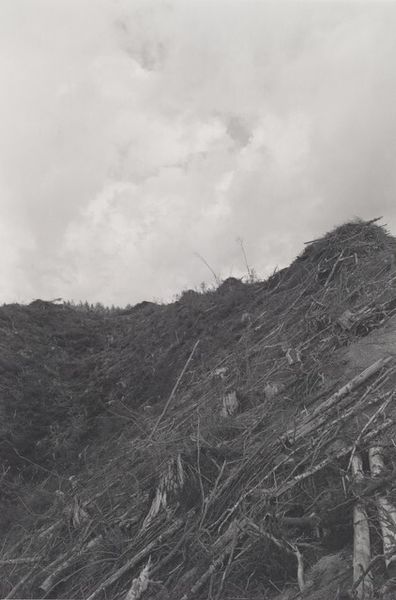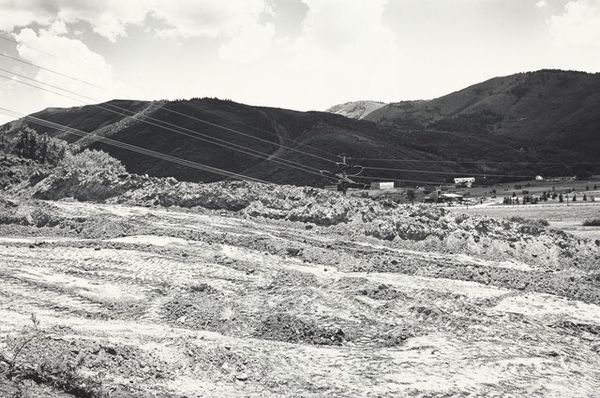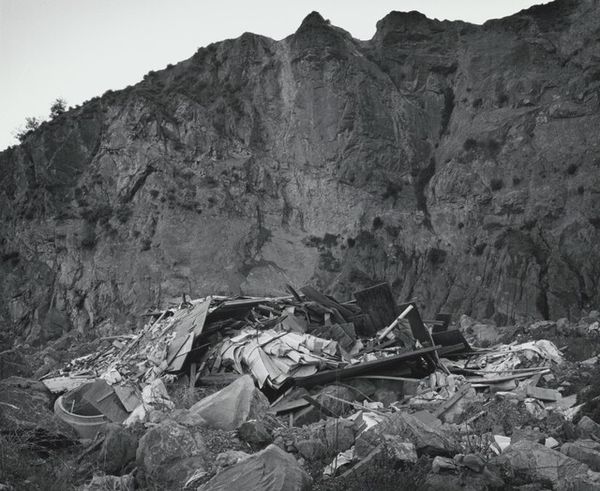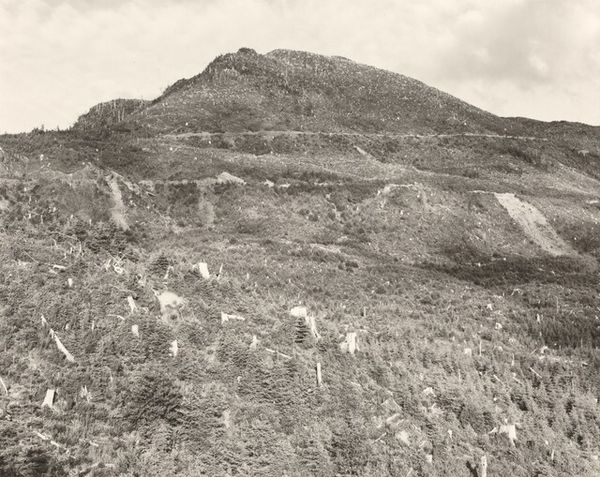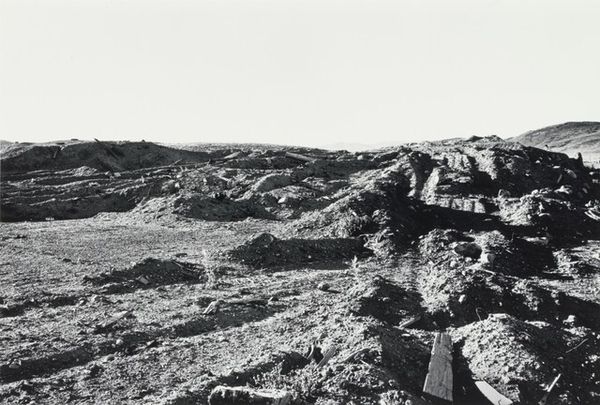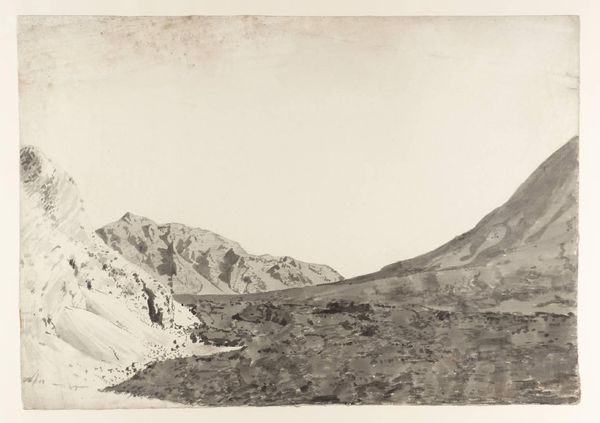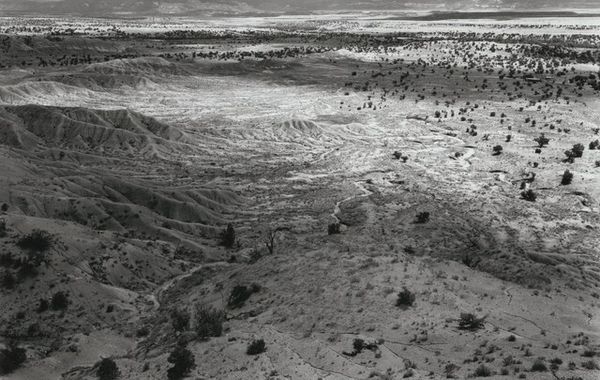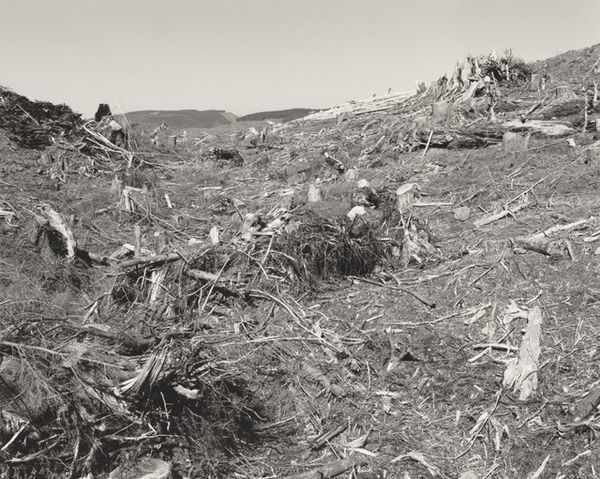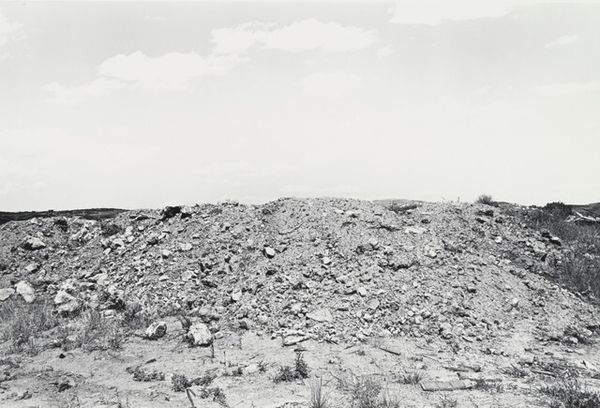
photography, gelatin-silver-print
#
conceptual-art
#
black and white photography
#
postmodernism
#
landscape
#
black and white format
#
photography
#
black and white
#
gelatin-silver-print
#
monochrome photography
#
monochrome
#
realism
#
monochrome
Dimensions: image: 18.8 × 22.9 cm (7 3/8 × 9 in.) sheet: 20.32 × 25.4 cm (8 × 10 in.)
Copyright: National Gallery of Art: CC0 1.0
Editor: This is *San Quentin Point, no. 20*, a gelatin silver print, likely taken between 1982 and 1985 by Lewis Baltz. It feels desolate, almost post-apocalyptic. There's something unsettling about its starkness. What's your interpretation? Curator: Baltz’s work consistently examines the impact of human activity on the landscape, often focusing on sites of industrial or social neglect. This image, given its location near San Quentin, can be viewed through the lens of systemic inequality and the carceral system's environmental consequences. How does knowing that the title includes “San Quentin” change how you see the image? Editor: It definitely adds a layer of grim reality. It's not just a random landscape; it's tied to a specific place of incarceration, implying a narrative of social control and perhaps environmental injustice. It feels less abstract now. Curator: Exactly. Baltz doesn’t offer solutions, but critiques late capitalism. This bleak aesthetic serves as a powerful commentary on how these landscapes are both products and reflections of power structures and social alienation. Consider the monochrome: What does removing color achieve in this context? Editor: It flattens everything, making it harder to distinguish textures, maybe highlighting the uniformity and erasure that systems impose. It definitely amplifies the sense of desolation. Curator: Precisely. It speaks to a deliberate obscuring, a visual parallel to the social issues often hidden in plain sight. We might ask ourselves whose perspectives and experiences are actively missing in such imagery? Editor: I hadn't thought about it that way, about the *lack* of voices being a key part of the work's message. Thank you, this was truly enlightening. Curator: My pleasure! Hopefully, these conversations help reveal that photography—especially documentary photography—always comes with ethical responsibilities.
Comments
No comments
Be the first to comment and join the conversation on the ultimate creative platform.
